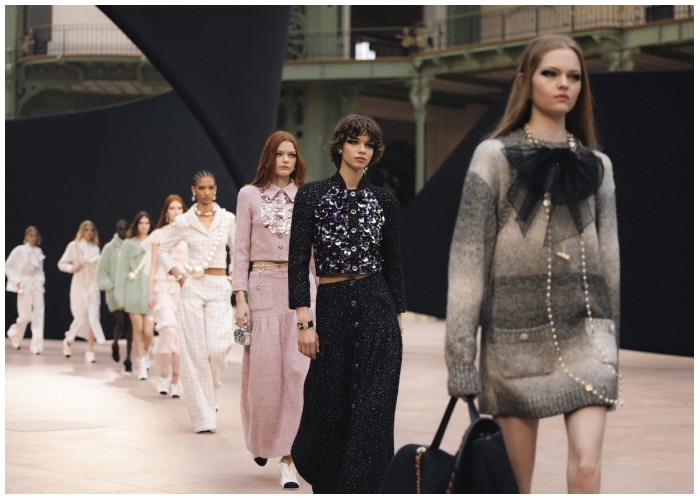In a year where overproduction and perfection are losing their appeal, 2025’s most interesting fashion trend is the one that looks incomplete on purpose. From frayed hems and exposed seams to inside-out silhouettes and raw edges, the “unfinished” aesthetic is more than just a style choice—it’s a rebellion. Designers and consumers alike are rejecting polish in favor of honesty, imperfection, and texture. It’s not just about being edgy or cool—it’s about challenging what we consider done, beautiful, or worth wearing. In a culture that’s long celebrated flawless finishes, this shift toward the imperfect is loud, layered, and surprisingly liberating.
Imperfection as Intention
What once looked like a manufacturing error is now front-row runway material. Frayed collars, dangling threads, and asymmetrical cuts all signal intent rather than accident. In 2025, imperfection is no longer a flaw to be hidden but a feature to be emphasized. These details tell a story—they suggest movement, process, and human touch. That’s a big part of their appeal. They allow wearers to express individuality without relying on the overly polished looks that have become synonymous with fast fashion algorithms.
Anti-Polish, Pro-Human
The unfinished trend pushes back against the idea that every garment needs to look clean, crisp, and ironed within an inch of its life. This aesthetic feels tactile, honest, and alive. It reminds us that clothing is made—not conjured—and that the process matters as much as the product. Consumers are gravitating toward pieces that show their construction, almost like wearable blueprints. In an era when so much feels automated and filtered, there’s something deeply satisfying about wearing something that feels unapologetically raw.
Runways Embrace the Rough Draft
Luxury fashion houses have embraced the look with surprising enthusiasm. High-end designers are intentionally leaving seams exposed, leaving threads untied, and cutting garments as if they were still being sketched.

These pieces command thousands of dollars and runway attention, proving that unfinished doesn’t mean unrefined. In fact, the craftsmanship required to make something look incomplete yet elevated is immense. The “draft” is now the masterpiece—and that reversal of expectations feels thrillingly modern.
Streetwear Joins In
While the trend may have begun in designer ateliers, it has quickly found a home in streetwear. Brands are experimenting with deconstruction, raw hems, and misaligned prints that play with proportion and form. The appeal is partly aesthetic and partly cultural—unfinished clothing taps into Gen Z’s larger appetite for authenticity, irony, and resistance to perfection. The look is effortlessly cool because it feels like it doesn’t try too hard—even though every detail is often meticulously planned.
It’s Not Sloppy—It’s Subversive
There’s a fine line between looking undone and looking lazy, but designers are walking it skillfully. The best examples of this trend feel intelligent and deliberate, not chaotic or rushed. They challenge the viewer’s assumptions about taste and technique. When done right, unfinished garments become statements about labor, value, and how we define luxury. They provoke questions: Who decides what “finished” means? Why does everything need to be neat? And what happens when we celebrate mess instead?
The DIY Spirit
This aesthetic also echoes the rise of upcycling, thrifting, and DIY fashion culture. More people are buying secondhand, modifying old garments, and learning how to sew, patch, and mend. In that context, the unfinished trend feels relatable—it reflects a generation that’s not afraid to wear clothes that look lived-in or handmade. It’s personal, imperfect, and proudly offbeat. And for once, it’s a fashion trend that doesn’t require perfection or wealth to participate.
Genderless and Fluid
Unfinished clothing often rejects traditional tailoring and silhouettes, making it a natural fit for fashion’s ongoing shift toward genderless design. Deconstructed pieces drape loosely, blur structure, and invite reinterpretation. Without crisp lines or rigid shapes, clothing becomes more expressive and less categorized. This makes the trend inclusive not just in terms of aesthetic, but also in who gets to wear it and how.
Rebellion in the Details
In an age when so many fashion trends feel algorithmically generated or influencer-approved, the rise of unfinished clothing is a quiet form of rebellion. It’s a refusal to be polished, filtered, or finalized. It’s fashion that looks you in the eye and says, “This is enough.” In a world that constantly demands more—more edits, more shine, more control—embracing rawness is a radical act.